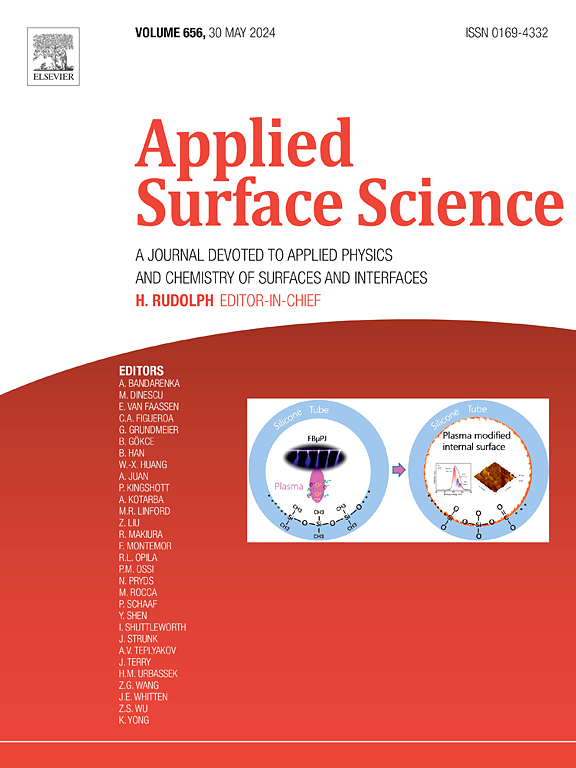两种常压N2 APPJ等离子体表面改性温度敏感电离体的比较研究
IF 6.3
2区 材料科学
Q2 CHEMISTRY, PHYSICAL
引用次数: 0
摘要
本研究旨在利用两种氮基大气压等离子体源:商用等离子体幕(ULD 60)和基于漫射共面表面阻挡放电(DCSBD)技术的新型线性大气压等离子体射流(APPJ) (DCSBD线性APPJ),提高夹层安全玻璃用sentryglass (SG)离子塑料的表面性能。通过水接触角(WCA)和附着力测试来评价其润湿性和附着力。用XPS分析了表面化学性质,用SEM分析了表面形貌变化。WCA结果表明,两种等离子体源都显著提高了SG电离体的润湿性,其中ULD 60表现出稍好的性能。然而,DCSBD线性APPJ等离子体处理具有更好的稳定性和较慢的老化效果。XPS分析表明,等离子体处理后SG电离体表面引入了更多富氧或富氮官能团。扫描电镜观察表明,ULD 60在较小的处理距离(10 mm和30 mm)内引起了表面明显的形态变化,而DCSBD线性APPJ在10 - 80 mm范围内没有引起明显的形态变化。粘附测量证实,两种等离子体处理都显著改善了SG电离体的粘附性能。本文章由计算机程序翻译,如有差异,请以英文原文为准。

Comparative study of plasma surface modification of temperature-sensitive ionoplast by two atmospheric N2 APPJ
This work aimed to enhance the surface properties of SentryGlas (SG) ionoplast for laminated safety glass using two nitrogen-based atmospheric pressure plasma sources: a commercial plasma curtain (ULD 60) and a novel linear atmospheric pressure plasma jet (APPJ) based on Diffuse Coplanar Surface Barrier Discharge (DCSBD) technology (DCSBD linear APPJ). The wettability and adhesion properties were evaluated through the water contact angle (WCA) and adhesion measurement. Surface chemistry was investigated by XPS and the morphology changes by SEM measurements. WCA results demonstrated that both plasma sources significantly improved the wettability of the SG ionoplast, with the ULD 60 exhibiting slightly superior performance. However, the DCSBD linear APPJ plasma treatment resulted in better stability and a slower ageing effect. XPS analysis showed that more oxygen-enriched or nitrogen-enriched functional groups were introduced onto the SG ionoplast surface after plasma treatment. SEM observations indicated that the ULD 60 induced notable morphological changes on the surface at a smaller treatment distance (10 mm and 30 mm), whereas the DCSBD linear APPJ did not induce any obvious morphological changes within the range of 10–80 mm. Adhesion measurements confirmed that both plasma treatments significantly improved the adhesion properties of the SG ionoplast.
求助全文
通过发布文献求助,成功后即可免费获取论文全文。
去求助
来源期刊

Applied Surface Science
工程技术-材料科学:膜
CiteScore
12.50
自引率
7.50%
发文量
3393
审稿时长
67 days
期刊介绍:
Applied Surface Science covers topics contributing to a better understanding of surfaces, interfaces, nanostructures and their applications. The journal is concerned with scientific research on the atomic and molecular level of material properties determined with specific surface analytical techniques and/or computational methods, as well as the processing of such structures.
 求助内容:
求助内容: 应助结果提醒方式:
应助结果提醒方式:


